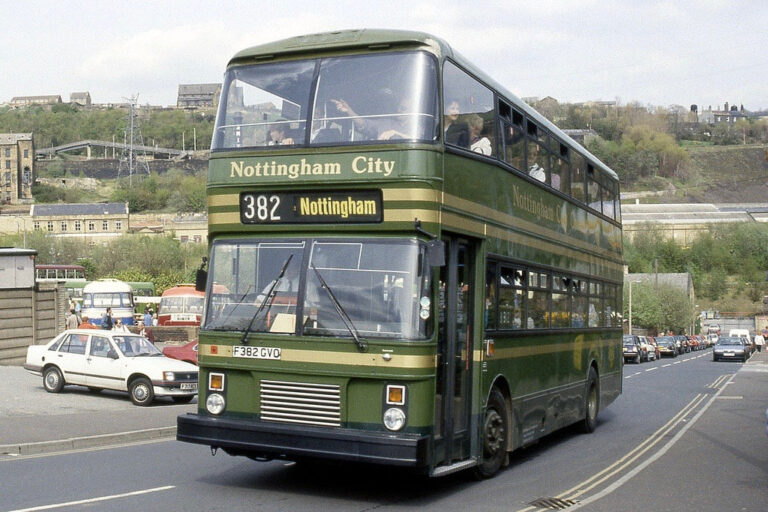
382 F382 GVO Later VIL3382
New To: Nottingham City Coaches
Chassis: Leyland DAB LDTL11/1R DD00126
Body: East Lancs CH43/37F A1825
Status: Awaiting Restoration
History
382 was one of a batch of 10 Leyland Lions supplied to Nottingham City Coaches (part of Nottingham City Transport) in 1989, with bodywork by East Lancs. Five were supplied as standard buses, whilst the other five (of which 382 is one) were specified with coach seating for private hire work.
It is built to what is known as the “Nottingham Standard” design, which gave Nottingham’s buses a distinctive look for many years. The Nottingham Standard included many features such as, an angled destination allowing it to be viewed easier, higher internal ceilings, a front bumper to reduce accident damage, curved upper deck front windows, curved windscreens and a standardisation of body parts between different vehicles for ease of maintenance.
The Leyland-DAB Lion was a mid-engined double decker bus chassis manufactured by Leyland between 1986 and 1988. The chassis was based on a Danish Automobile Building design. Only 32 were built and they were bought by Clydeside Scottish, Eastern Scottish and Nottingham City Transport. It was intended to compete with the Volvo Citybus mid-engined chassis.
As new, 382 was painted in Nottingham City Coaches Harrods Green livery, before being repainted into the later NCT Green and Cream livery. 382 was re-registered to VIL3382 a few years before being withdrawn by NCT. This was due to some work coming in that wanted newer buses, but non that were available were suitable, so they re-registered the Lions to disguise their age.
After NCT, 382 passed to Andrews of Tideswell where it was painted into the cream livery it can be seen in today. It later passed to Moving People based in Accrington, who put their vinyls on 382 but left the cream base livery. It was later acquired for preservation and has since been donated to the charity.
Relevance To The Collection
This bus is important to the collection as it represents the last batch of buses built with the “Nottingham Standard” features. It also represents an example of a relatively rare chassis.



